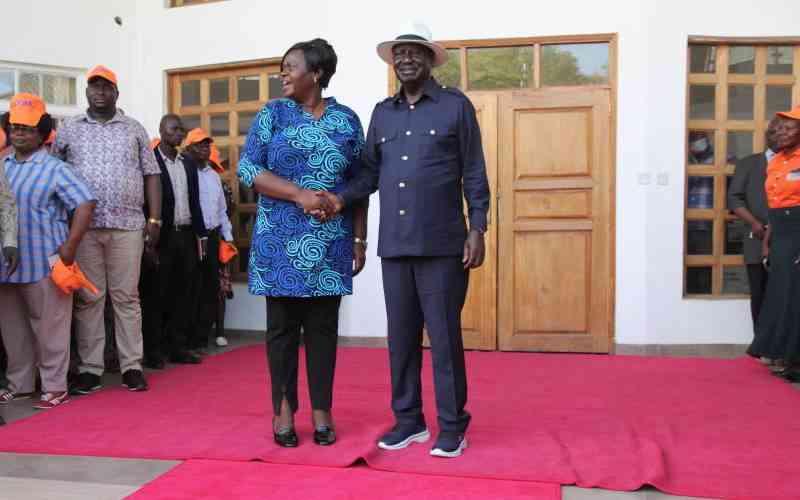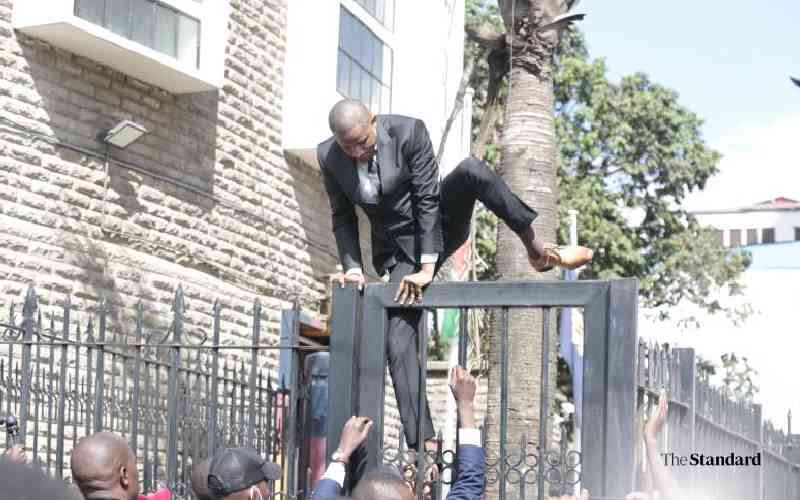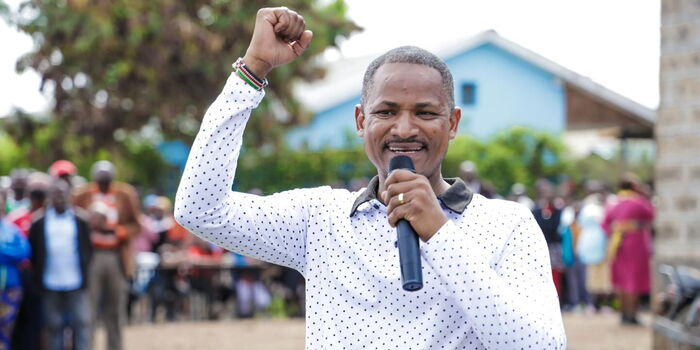Embakasi East MP Babu Owino has claimed that the government has withdrawn his security following his participation in the June 25, 2025 protest anniversary in Nairobi.
In a statement on Thursday, June 26, the legislator said he was targeted after he joined other leaders and protestors to mark one year since the 2024 demonstrations in which dozens of youth stormed Parliament during protests against the Finance Bill.
“Yesterday, I stood with the people—not against the nation, but for its future. I exercised my democratic right to protest peacefully against the actions of a government that is failing its citizens. Today, in retaliation, the government has withdrawn my official security,” Babu said.
The legislator condemned the move, terming it a threat to democracy. “I do not fear intimidation. I will not be silenced. My voice, and the voice of every citizen demanding justice, fairness, and freedom, will only grow louder. Kenyans are my security,” he added.
He called on the public to remain vigilant and continue demanding accountability from their leaders.
The protest anniversary was marked by demonstrations across 24 counties, commemorating the 2024 Gen Z protests that left more than 60 people dead. According to human rights agencies, this year’s protests turned chaotic in parts of the country.
The Independent Policing Oversight Authority (IPOA) reported that at least eight people were killed in the Wednesday protests, with fatalities recorded in Nairobi, Emali, Molo, and other towns. The agency said 207 people were injured, including protesters and police officers, with incidents of property looting and destruction also reported.
Police used live bullets, tear gas, water cannons, whips, and batons to disperse protesters in different parts of the country. IPOA noted that some officers concealed their identity tags, and there were interruptions to public transport and commercial activity.
In its preliminary findings, IPOA committed to investigating all cases involving excessive force by police and urged officers to act within the law.
Meanwhile, the Kenya National Commission on Human Rights (KNCHR) confirmed eight deaths across six counties: Machakos, Makueni, Nakuru, Kiambu, Uasin Gishu, and Nyandarua. Over 400 people, including journalists, were injured, with 83 referred for further treatment. KNCHR said 61 protesters were arrested in various parts of the country, most of them in Nairobi.
The rights body also raised concerns over infiltration of the peaceful protests by criminal gangs. It cited reports of “hired goons” causing violence and looting in major towns including Eldoret, Mombasa, Nakuru, Nairobi, and Kisumu.
KNCHR also condemned the directive by the Communications Authority of Kenya ordering a halt to live coverage of the protests by broadcasters, terming it a violation of the public’s right to information.
Tension remained high in Nairobi as a group of protestors attempted to access State House but were repelled by anti-riot police. University of Nairobi students who had gathered outside State House Girls School were dispersed using tear gas. Other protestors engaged police in running battles around Kenyatta Avenue and All Saints Cathedral.
Chaos was also witnessed in Uhuru Park, where protestors pulled down statues and dragged them toward the city centre. In Molo, one person was reported shot dead, while others were injured in Olkalau, Kikuyu, and Matuu as they tried to breach police stations.
Several businesses along River Road and Luthuli Avenue were looted after criminals infiltrated the protests, taking advantage of the situation as police concentrated efforts elsewhere in the city.












